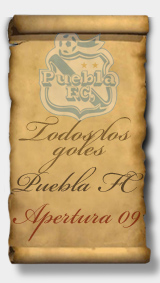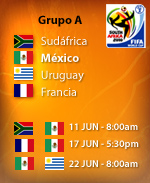|
|
|||
| Puebla de Zaragoza: 27 de Marzo de 2010 | |||
 |
|||
 |
||||||||||||||||||||
|
How Long Does A High School Soccer Game Last?When it comes to high school soccer, you might wonder just how long a game actually lasts. Generally, it’s a structured format, but various factors can influence the total duration. While its standard length is 80 minutes, other elements like halftime and possible overtimes can extend that time. Curious about how these components affect the game's flow? Let’s explore the nuances of high school soccer game duration. Understanding High School Soccer Game DurationA high school soccer game is structured into two halves, each lasting 40 minutes, which totals 80 minutes of play. There's typically a halftime interval of approximately 10 minutes that allows players to recuperate before the second half commences. While this format is standard for most high school games, championship matches may feature a longer duration of 90 minutes, organized into two 45-minute halves. Additionally, it's important to note that stoppage time may be added at the end of each half to account for interruptions due to injuries or substitutions, which can extend the overall length of the game. This contrasts with youth soccer games, which generally consist of 60 minutes of play, providing a longer and more dynamic experience in high school soccer. Regulation Time for High School GamesRegulation time for high school soccer games typically consists of two halves, each lasting 40 minutes, resulting in a total of 80 minutes of game time. A mandatory 10-minute halftime break is provided to allow players to rest and regroup between halves. However, the total duration of the game may be prolonged due to stoppage time, which accounts for interruptions such as injuries or substitutions. In championship games, the structure may differ, with the match being extended to 90 minutes comprising two 45-minute halves. If a match concludes in a tie, high school soccer usually follows a protocol that includes overtime periods; these consist of two 10-minute halves. Should the score remain tied after overtime, a penalty shootout is implemented to determine the victor. This format introduces an additional layer of competition, ensuring that a winner is declared in critical matches. The regulatory framework for these games is designed to ensure fairness and competitiveness while accommodating necessary breaks for players. Halftime Breaks in High School SoccerHalftime breaks in high school soccer serve an important function in the overall structure of the game. Lasting approximately 10 minutes, these breaks allow players to refocus and recover before the second half commences. During this time, athletes can hydrate and receive any necessary medical attention, which is critical for maintaining their physical well-being. Coaches utilize halftime as an opportunity to assess player performance and review strategies based on the first half. This analysis is vital for implementing adjustments aimed at enhancing team performance in the second half. The brevity of the halftime period, particularly in comparison to professional soccer where breaks can be longer, is designed to sustain the momentum of the game and keep players actively involved. It is also important for teams to be mindful of the timing of their return to the field. There are regulations in place to penalize teams for delaying their return, which underscores the importance of punctuality. This discipline helps ensure that the game proceeds smoothly and that all participants are prepared to face the forthcoming challenges. Overtime Rules in High School SoccerHigh school soccer may conclude without a definitive winner after the regular 80 minutes of play. In the event of a tie, two 10-minute overtime periods are implemented to determine the winner. The overtime periods utilize a sudden death format, meaning that the first team to score during this time is declared the winner. If no goals are scored during the overtime periods, the match proceeds to a penalty shootout to establish the outcome. It is important to note that the specifics regarding overtime and penalty shootouts can vary significantly, depending on the regulations set by individual states or local leagues. These variations can influence not only the rules in play but also the overall structure and duration of the game. Therefore, teams and coaches should familiarize themselves with their respective governing bodies' guidelines to ensure compliance and prepare adequately for potential overtime scenarios. Factors Affecting Game LengthSeveral factors can influence the overall length of a high school soccer game. The standard duration is typically 80 minutes, divided into two halves of 40 minutes each. A halftime break, which usually lasts about 10 minutes, provides players an opportunity to regroup and strategize. In championship matches, the regulation play may extend to 90 minutes, reflecting a standard for higher-stakes competitions. Moreover, stoppage time can be added at the end of each half to account for interruptions such as injuries, fouls, or substitutions. This additional time varies based on the referee's discretion and specific incidents that occur during the match. Comparison to Other Levels of SoccerUnderstanding the duration of high school soccer games is essential for comparing it to other levels of the sport. High school soccer matches generally last 80 minutes, divided into two 40-minute halves. This time structure is shorter than the 90-minute duration typical in professional leagues and NCAA competitions, which consist of two 45-minute halves. Halftime in high school soccer is also shorter, lasting only 10 minutes, while NCAA games allow for a 15-minute break. In contrast, youth soccer typically features even shorter game lengths, often comprising two 10-minute halves for younger age groups. It's important to note that championship matches at the high school level may adhere to the 90-minute standard regulation. This variation in game length across different levels of soccer reflects the differing developmental needs and competitive structures inherent to each category. The Role of Stoppage TimeStoppage time, also referred to as injury time, is an integral component of soccer matches at all levels, including high school games. This time is added to the end of each half to compensate for significant interruptions that occur during the game, such as injuries, substitutions, and other delays. Referees are responsible for assessing these interruptions and determining the appropriate amount of stoppage time. Typically, stoppage time ranges from 1 to 3 minutes but can be longer in instances where there are prolonged delays. As a result, the total game duration may extend beyond the standard 80 minutes of regulation play. Players and coaches must remain vigilant during stoppage time, as critical scoring opportunities and game-changing events can occur right before the final whistle. Thus, stoppage time isn't merely an extension of play but a vital part of the match that can influence the outcome. Championship Game Length VariationsChampionship high school soccer games generally follow a structure that distinguishes them from regular-season matches in terms of length and potential for additional play. These games typically consist of two 45-minute halves, totaling 90 minutes of regulation play, which aligns with the format used in both collegiate and professional soccer. A halftime break of 15 minutes is customary, allowing teams to reassess their strategies and make necessary adjustments. If the match is tied at the conclusion of the 90 minutes, it may proceed to extra time, which involves two additional 10-minute halves. This format is designed to provide both teams an opportunity to break the deadlock in a limited timeframe. Should the match still remain tied after extra time, a penalty shootout will be employed to determine the winner. This structure not only adds potential length to championship matches compared to standard games but also introduces a level of unpredictability and strategic depth, as teams may need to prepare for multiple scenarios regarding match duration and outcome determination. Benefits of Knowing Game Length for Parents and PlayersUnderstanding the standard game length in high school soccer, which is 80 minutes divided into two 40-minute halves, is beneficial for both parents and players. This knowledge enables better planning for transportation and attendance at games. The 10-minute halftime provides players with an opportunity to strategize and recover, allowing them to enhance their performance in the second half. Familiarity with the structure of the game encourages players to develop stamina and maintain concentration throughout the match. It's also important to note that championship games may have an extended duration of up to 90 minutes, which can affect scheduling. Additionally, recognizing that stoppage time may be added to the official game length prepares parents and players for potential delays, ultimately facilitating smoother logistics for post-game activities. ConclusionIn conclusion, knowing how long a high school soccer game lasts helps you appreciate the sport better. With 80 minutes of regulation play, a 10-minute halftime break, and the potential for overtime, the game can extend beyond the standard duration. Understanding these time factors not only prepares players and parents for game-day logistics but also enhances your enjoyment of the match. So, whether you're cheering from the sidelines or playing on the field, you're all set to engage fully! |
|
||||||||||||||||||
|
||||||||||||||||||||








